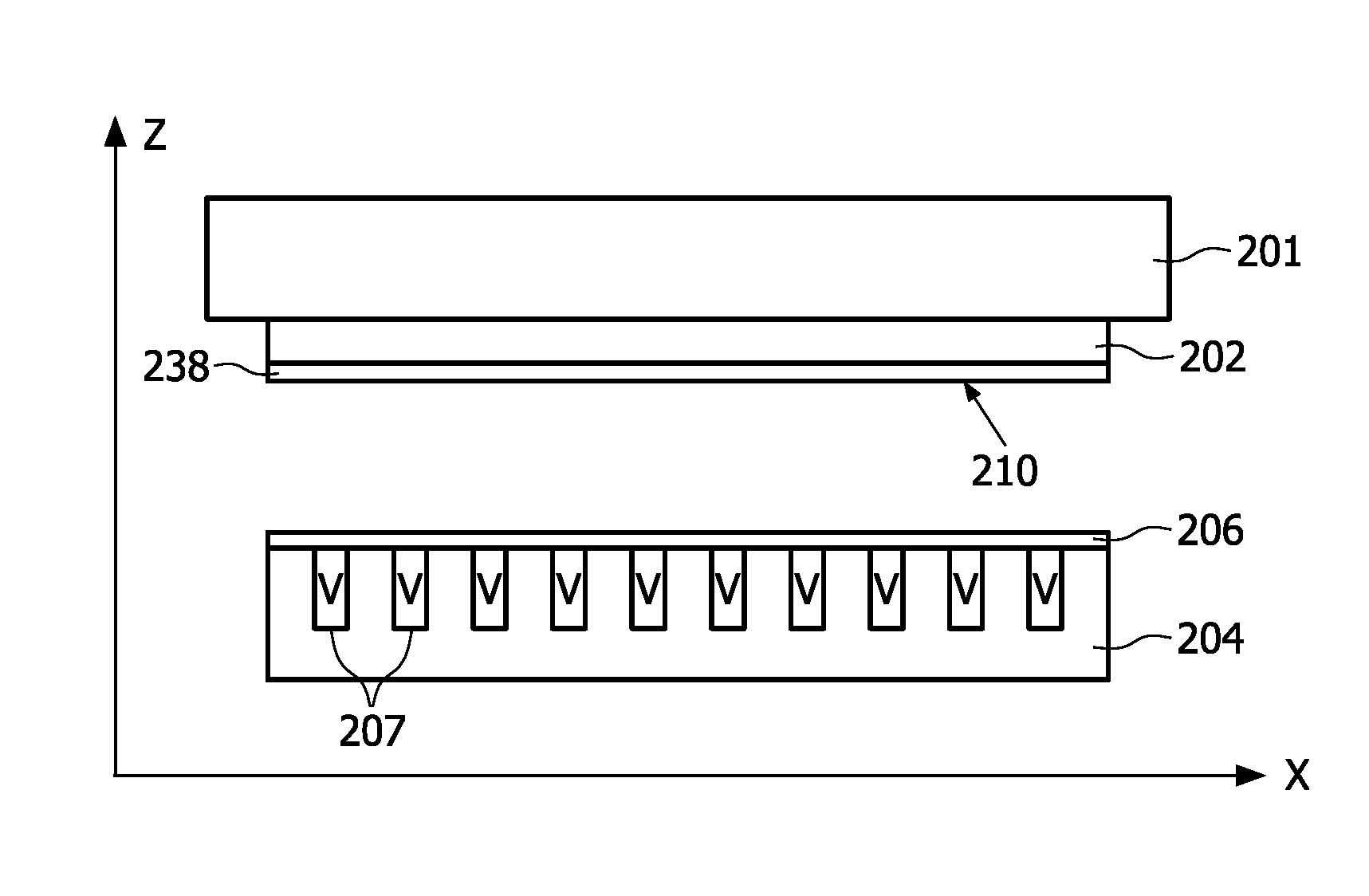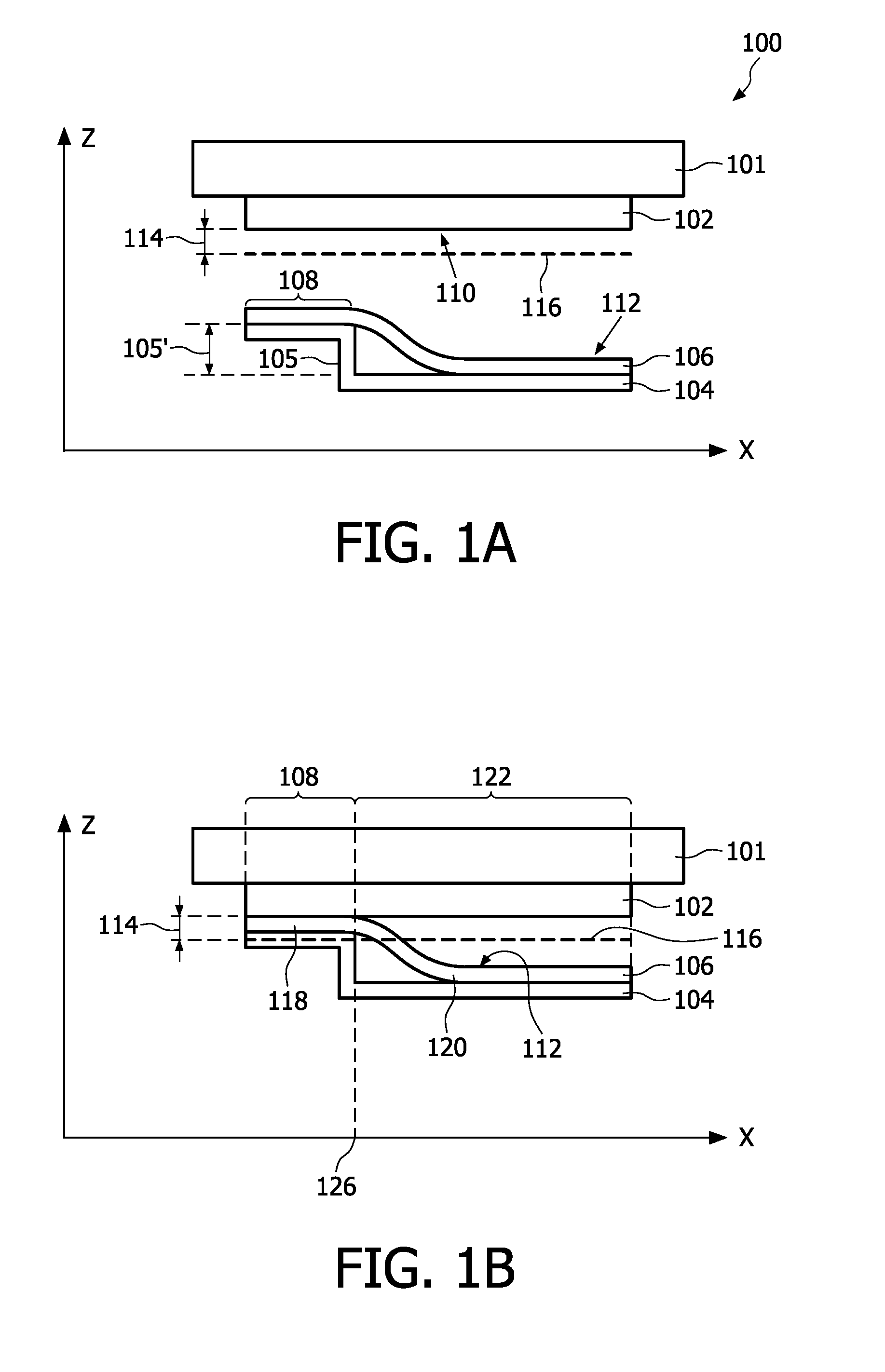Method and apparatus for applying a sheet to a substrate
a technology of substrate and method, applied in the field of method and apparatus for applying a sheet to a substrate, can solve the problems of complicated correction system, affecting the accuracy of the correction system, so as to achieve the effect of preventing the curvature of the contact front, reducing the risk of damage, and controlling the release ra
- Summary
- Abstract
- Description
- Claims
- Application Information
AI Technical Summary
Benefits of technology
Problems solved by technology
Method used
Image
Examples
first embodiment
[0066]an apparatus and method according to the invention is described with reference to FIGS. 1A to 1F. The apparatus comprises a first holder 101 holding a substrate 102 for example by creating a vacuum in between the first holder 101 and the substrate 102 using vacuum nozzles (not shown) present in the first holder to create an under-pressure between the first holder and the substrate. This is for example common practice in semiconductor industry for handling and holding semiconductor wafers. Other mechanisms for holding the substrate using mechanical clamping or electromechanical attachment may be alternatively used.
[0067]The apparatus further comprises a second holder 104 having a shape such that it comprises a step 105 with a height 105′. The second holder 104 sustains a sheet 106, whereby in this embodiment the holder holds a first area 108 of the sheet firmly in for example the same manner as the substrate is held by the first holder. The sheet 106 is slightly bent due to the...
second embodiment
[0079]The method and apparatus for establishing further contact as used in a second embodiment may be advantageously used for counteracting the effects of advancement rates that vary over the first and second surfaces to be contacted with each other.
[0080]The second embodiment is described with respect to FIG. 2. This embodiment differs from the first embodiment in that after the establishment of the initial contact the second area is restrained from making further contact by attaching a portion of sheet to a second holder.
[0081]FIG. 2A shows a first holder 201 holding a substrate 202, the substrate having a first surface 210. Further shown is a second holder 204 having devices called actuators for restraining (holding) and releasing a sheet 206 held by the second holder 204. To this end the second holder 204 in this example comprises a plurality of spaced-apart pneumatic actuators 207. The apparatus also comprises means for controlling of the actuators in order to let them restrain...
PUM
 Login to View More
Login to View More Abstract
Description
Claims
Application Information
 Login to View More
Login to View More - R&D
- Intellectual Property
- Life Sciences
- Materials
- Tech Scout
- Unparalleled Data Quality
- Higher Quality Content
- 60% Fewer Hallucinations
Browse by: Latest US Patents, China's latest patents, Technical Efficacy Thesaurus, Application Domain, Technology Topic, Popular Technical Reports.
© 2025 PatSnap. All rights reserved.Legal|Privacy policy|Modern Slavery Act Transparency Statement|Sitemap|About US| Contact US: help@patsnap.com



